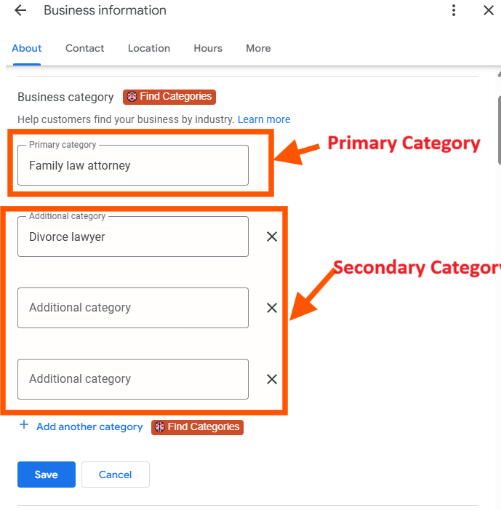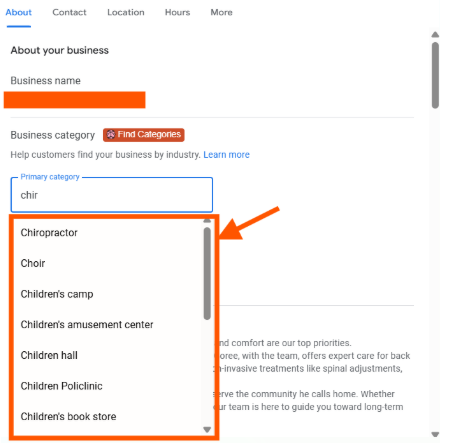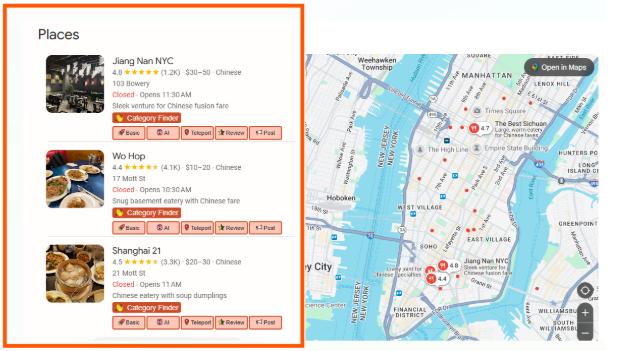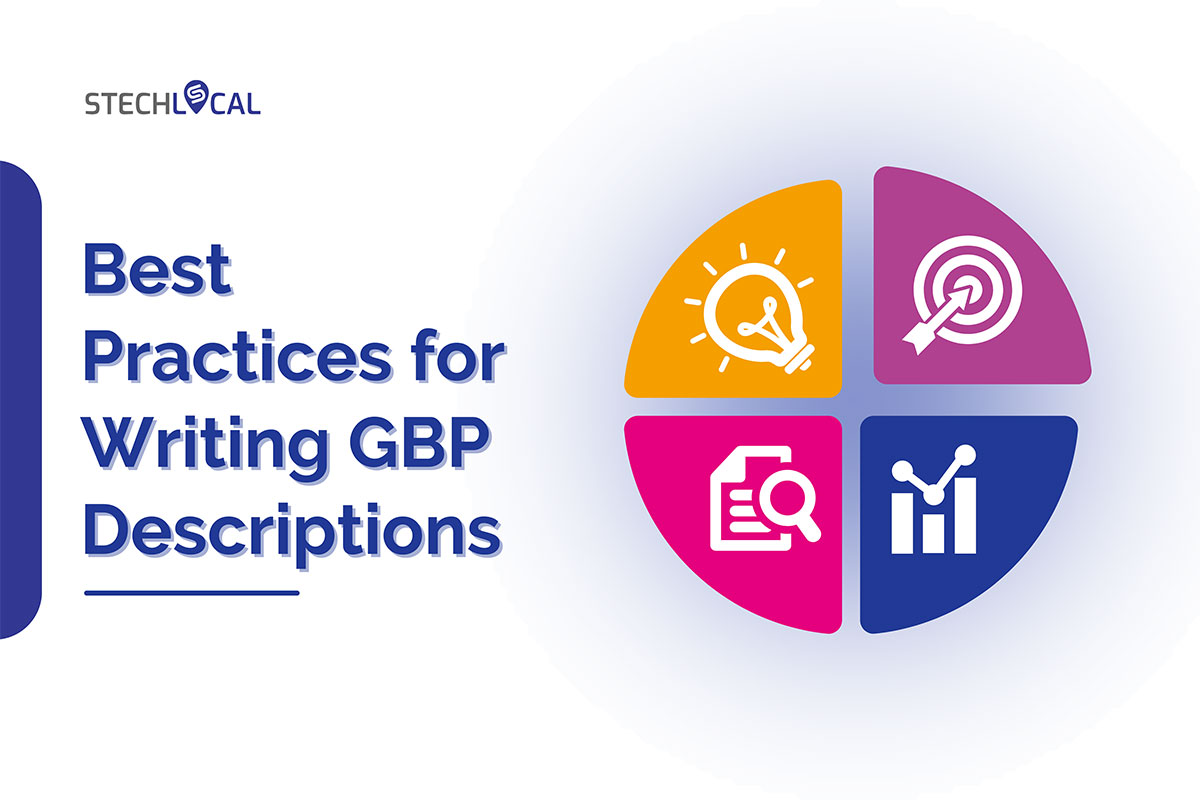How To Choose the Right GBP Category – Step-by-Step Guide

Among all the fields you fill in when setting up your GBP, the category selection is arguably the most critical ranking factor for local SEO.
If you want your business to show up in the Google Local Pack, on Maps, and in voice search results, setting up a Google Business Profile (GBP) isn’t enough—you need to choose the right category.
Your GBP category tells Google what your business actually does, making it a core signal in determining whether you appear for relevant local searches.
With this guide, you’ll learn not only how to choose the most relevant GBP category for your business, but also how to analyze competitors, use SEO tools, and apply advanced techniques to dominate local search in 2025.
What Is a Google Business Profile Category?
GBP categories are predefined labels that help Google understand what your business is, not just what it offers. Unlike keywords, which describe what users are searching for, categories inform Google of your core business type so it can match you with the right local search intent.
As of 2025, there are over 4,000 active GBP categories in the U.S., covering nearly every business model—from family law attorneys and cosmetic dentists to HVAC contractors and marketing agencies. These categories are standardized and maintained by Google, meaning you cannot create custom ones.
By selecting the most accurate primary category and strategically layered secondary categories, you position your business for maximum local exposure, higher engagement, and more qualified leads.
According to Google’s Q2 2025 earnings, AI Overviews now reaches over 2 billion monthly users, and AI Mode is already live in the U.S. and India—solid evidence that Google’s search experience is becoming more AI-driven. That means structured, category-aligned GBP content is increasingly essential to appear in AI-generated summaries.
Primary vs. Secondary GBP Categories: What’s the Difference?

Understanding the difference between primary and secondary categories is crucial for building a strong local SEO strategy. While both serve to help Google classify your business and match it to local search queries, they are not equal in importance or function.
Primary Category: Your Core Ranking Signal
The primary GBP category is the most important local ranking factor after your business’s name and location. It defines what your business is, and it determines which search results your listing is eligible to appear in—especially in the Google Local Pack and Google Maps.
- You can choose only one primary category, so it must be chosen strategically.
- It carries the highest algorithmic weight in Google’s local search ranking system.
- It influences the features available on your listing, such as service menus, booking options, or product displays.
Example:
If you operate a legal practice specializing in car accident claims, your primary category should be “Personal Injury Attorney”, not just “Lawyer.” This specificity helps Google match your listing to searches like “car accident lawyer near me”.
Secondary Categories: Supporting Visibility Across Related Searches
Secondary categories are additional classifications that describe the other services your business offers. You can add up to nine secondary categories, and while they don’t hold as much ranking power as the primary, they broaden your discoverability across a wider range of local search terms.
- Help your business appear in related but lower-volume queries.
- Allow you to reflect diverse service offerings without confusing the core business identity.
- Boost visibility for long-tail searches and niche keywords.
Example:
A full-service wellness center may use:
- Primary: Chiropractor
- Secondary: Massage Therapist, Sports Injury Clinic, Acupuncture Clinic, Physical Therapist
This setup allows them to show up not just for “chiropractor near me,” but also for searches like “sports massage Arlington” or “acupuncture back pain.”
Category relevance can be strengthened by reviews that mention your services. Here’s how reviews impact local SEO.
Summary Table – Primary vs. Secondary GBP Categories
| Feature | Primary Category | Secondary Categories |
| Quantity | Only one | Up to nine |
| Purpose | Define core business identity | Highlight additional services |
| SEO Weight | High – major ranking factor | Medium – supporting signals |
| Feature Activation | Triggers most listing-specific features | May unlock relevant filters/visibility boosts |
| Impact on Local SEO | Direct impact on Google Local Pack | Expands search coverage |
Step-by-Step Process to Choose the Right GBP Category
While optimizing Google Business Profiles, selecting the correct GBP category is not a guesswork task—it’s a data-driven decision that directly influences your local SEO rankings, Google Maps visibility, and overall customer acquisition.
The following is a proven, expert-level framework to identify and optimize your GBP category for maximum performance in local SEO.
Step 1: Define Your Core Services
Before diving into category selection, clarify what your business actually does—not just broadly, but specifically in terms of high-value service offerings.
- Start by listing your top revenue-generating services or those with the highest customer demand.
- Your primary GBP category should align with the service you want to be most visible for in local search.
Example: If you’re a law firm offering multiple services, but 70% of your revenue comes from accident claims, your core category should be “Personal Injury Attorney”, not the generic “Lawyer.”
Furthermore, ensure your category matches your brand positioning. If you brand yourself as a pediatric specialist, selecting a general category like “Doctor” will weaken your visibility and credibility.
Step 2: Run a Competitor Analysis
One of the smartest ways to choose the right Google Business Profile category is by analyzing what’s already working for top-ranking competitors in your area.
But here’s the catch—Google doesn’t publicly show a business’s selected categories in the Local Pack or Maps UI. That means you can’t rely on just searching and guessing—you need to use the right tools to extract this data.
How to Do It the Right Way:
- Search your core service keyword (e.g., “car accident lawyer Dallas” or “emergency dentist near me”) in incognito mode on Google or directly in Google Maps.
- Identify the top 3–5 businesses consistently appearing in the Local 3-Pack and Google Maps results.
- Use tools like:
- GMBSpy (Chrome Extension) – Reveals the primary and secondary categories used by any GBP listing on the map.
- PlePer (Chrome Extension or Audit Tool) – Extracts detailed GBP metadata, including categories, NAP, and reviews.
- Document which categories these top businesses are using as their primary and secondary categories.
Step 3: Research Existing GBP Category List (2025 Update)

It’s important to understand that Google Business Profile categories are not user-generated—you can’t input on your own. Google provides a curated list of predefined categories, and you must choose from what’s available.
When you begin typing a category inside your GBP dashboard, only Google-supported categories will auto-populate—if it doesn’t show up, it doesn’t exist (yet) in Google’s taxonomy.
Step 4: Validate Relevance with Keyword Tools
Even though you can’t create your own categories, you still need to ensure the categories you choose are aligned with what people are searching for.
This means validating that the available GBP categories match the high-volume, high-conversion keywords your audience uses.
Below mentioned is how to validate relevance with keyword tools:
- Search your keyword in Google and check which categories show up in the Local Pack (hover over top listings using tools like GMBSpy).
- Use Google Autocomplete and PAA (People Also Ask) to understand real-world phrasing and intent.
- Cross-reference keyword intent with the closest-matching GBP categories from Google’s list.
- Use tools like Semrush or Google Keyword Planner to confirm local search volume for each relevant keyword.
Remember: Just because a keyword has volume doesn’t mean there’s a corresponding GBP category. Your job is to bridge the gap between real-world demand and Google’s limited taxonomy.
Example: “AI Marketing Consultant” might have growing demand, but if Google doesn’t offer it as a category, “Marketing Consultant” or “Advertising Agency” would be the next-best matches.
Step 5: Test and Monitor Performance
Even with thorough research, you should treat your GBP category selection as a living strategy, not a one-time task.
Monitor post-update performance using:
- Google Business Profile Insights
- Track changes in views, clicks, calls, directions, and website visits
- Visualize category-level performance across locations.
- Detect visibility drops or ranking shifts after a category update
- Optional: Use Local Rank Trackers to monitor Map Pack rankings by zip code or keyword.
If performance drops after a category change, revert or refine your secondary categories to regain balance.
Why GBP Category Selection is Important for Local SEO
The right category connects your business to real customer intent. The wrong one disconnects you from the very people trying to find your services.
Your Google Business Profile category lets Google use it to understand what your business is, so it can match you with the right search intent across Google Maps, the Local 3-Pack, and voice-based search results.
Direct Impact on Local Pack Visibility and Google’s Ranking Algorithm

Your primary category heavily influences whether or not you appear in the top 3 listings (the “Local Pack”) when users search for relevant services in your area. Choose the wrong one, and your visibility will suffer—even if your reviews and proximity are strong.
Whether a customer types “plumber near me” or “emergency plumber in Phoenix,” Google evaluates your primary category to decide if your business fits that query.
This relevance is shaped by:
- User intent
- Business proximity
- Chosen category and completeness of your GBP listing
Determines Relevance for Discovery Searches
Most customers don’t search for your business by name. They search by category: “best pediatric dentist near me” or “emergency plumber in Chicago.”
Your GBP category determines whether you’re eligible to appear in these high-intent discovery searches.
Controls Listing Features & Attributes
Your selected category dictates which attributes and features you can display on your profile—such as appointment links, service menus, insurance information, or even dine-in/delivery tags for restaurants. These features improve conversion rates and user trust.
Influences Visibility on Mobile, Voice & Map Searches
In a mobile-first world, where more than half of local searches happen on smartphones or via voice assistants, your GBP category plays a key role in voice-triggered results like: “Hey Google, find a personal injury attorney near me.”
If your profile isn’t categorized correctly, you simply won’t show up—no matter how optimized the rest of your listing is.
According to Google’s Official Guidelines:
Google categorizes searches into Direct, Discovery, and Branded, based on how customers find your business profile.
Tools To Help You Identify the Best GBP Categories
Fortunately, several reliable tools can help you uncover which GBP categories your competitors are using, what users are searching for, and how to make strategic decisions that boost your local search performance.
The following are the top tools local businesses and SEO professionals use to identify and optimize GBP categories in 2025:
Google Keyword Planner (Intent Matching)
Even though GBP categories are fixed and cannot be customized, you still need to ensure the categories you select match real user intent. Google Keyword Planner helps you with the following:
- Validate search volume for your core services
- Compare term variations (e.g., “auto accident attorney” vs “personal injury lawyer”)
- Find region-specific keyword demand across states or cities
Google’s Official GBP Category List (Reference Tool)
This is not a tool per se, but you should always cross-reference your decisions with Google’s most updated GBP category list.
- Only official categories will auto-populate when editing your profile
- If the category you’re considering doesn’t show up, it’s not supported
- Updated several times per year, so check frequently
PlePer Chrome Extension
PlePer is a powerful Chrome extension that allows you to extract complete Google Business Profile data directly from Google Maps listings. It shows you the following:
- The primary and secondary categories competitors are using
- Review count, NAP data, and other GBP metadata
- Whether a competitor is using advanced features like products, services, or booking links
GMBSpy (Chrome Extension)
GMBSpy is a lightweight but effective tool that allows you to hover over GBP listings on Google Maps and reveal their primary and secondary categories.
- No need to click into each profile manually
- Great for rapid-fire competitor scans in your area
- Ideal for identifying category trends among top-ranked businesses
Comparison Table: Best Tools to Identify GBP Categories
| Tool | Primary Purpose | Key Features | Best Use Case | Free/Paid |
| Google Keyword Planner | Match GBP category with real search intent | ✅ Local search volume
✅ Keyword comparison ✅ Intent analysis by location |
Identify high-volume services and match them to GBP categories | ✅ Free (Google Ads account) |
| Google GBP Category List | Verify if a category is officially supported | ✅ Auto-populating categories
✅ Regularly updated ✅ Prevents selection errors |
Confirm the exact category exists in Google’s current taxonomy | ✅ Free |
| PlePer (Chrome Extension) | Extract competitor GBP data from Google Maps | ✅ Reveals primary/secondary categories
✅ Shows reviews, NAP ✅ Checks feature usage |
Deep-dive audits of competitors’ listings on Google Maps | ✅ Free plan available |
| GMBSpy (Chrome Extension) | Instantly display GBP categories by hovering over listings | ✅ Hover to reveal categories
✅ Quick scans ✅ Trend spotting across map listings |
Rapidly analyze category usage among top-ranked local businesses | ✅ Free |
Common Mistakes To Avoid When Selecting GBP Categories
While selecting a GBP category may seem straightforward, many businesses unknowingly sabotage their local SEO performance by making avoidable missteps.
Inaccurate or careless category selection can lead to poor rankings, irrelevant traffic, or even GBP suspensions. The following are the most common mistakes—and how to avoid them.
1. Don’t Choose Irrelevant or Too Broad Categories
One of the most damaging errors is selecting a GBP category that doesn’t accurately reflect your primary service, or choosing something too generic like “Consultant” or “Service Provider.” These broad categories weaken your relevance and decrease your visibility for high-intent local searches.
What to do instead:
Always choose the most specific, accurate category available. If you’re a personal injury attorney, select “Personal Injury Attorney”—not “Lawyer.”
2. Don’t Forget To Update When Services Evolve
As your business grows or pivots—adding new services or removing outdated ones—your GBP categories must evolve too. Many businesses forget to revisit their category settings, which leads to outdated listings that misrepresent current offerings.
What to do instead:
Audit your GBP profile at least once per quarter, especially after launching new services, entering new markets, or repositioning your brand.
3. Avoid Copying Competitors Blindly Without Alignment
While competitor analysis is essential, blindly copying a competitor’s category without understanding your own core positioning is a mistake. What works for them may not reflect your unique offerings or local reputation.
What to do instead:
Use tools like GMBSpy or PlePer to research competitors, but always align your category choice with your most profitable, visible, and scalable service.
4. Don’t Same Category Across All Locations (Without Local Nuance)
Multi-location businesses often apply a uniform category across all branches, even if each serves a different customer base or offers a varied service set. This leads to ranking cannibalization, reduced local relevance, and lower click-through rates.
What to do instead:
Customize categories per location based on:
- The most in-demand service in that area
- Competitor category trends in the local zip code
- Regional terminology or search behavior
Example: A law firm might use “Family Law Attorney” in one city where divorce cases dominate, and “Criminal Justice Attorney” in another with a different legal demand profile.
Niche Examples: Best GBP Categories by Industry
| Industry | Primary Category | Secondary Categories (Up to 9) |
| Law Firms | Personal Injury Attorney | Family Law Attorney, Criminal Justice Attorney |
| Chiropractors | Chiropractor | Sports Injury Clinic, Massage Therapist |
| Restaurants (Indian focus) | Indian Restaurant | Vegetarian Restaurant, Delivery Service |
| Real Estate | Real Estate Agency | Real Estate Consultant, Property Management Company |
| Marketing Agencies | Marketing Agency | Marketing Consultant, Advertising Agency |
| Dental Practices | Cosmetic Dentist | General Dentist, Dental Clinic |
| Home Services (Plumbing) | Plumber | Bathroom Remodeler, Emergency Plumber |
| Auto Repair | Auto Repair Shop | Tire Shop, Oil Change Station |
Updating Your GBP Category: What To Expect
Changing your Google Business Profile category can be a strategic move—especially if your services evolve or you discover a more accurate category for your business. However, this update isn’t always seamless.
Google treats category changes as a core modification, which can temporarily impact your profile’s visibility, status, or even trigger a re-verification process.
1. How Long Do Updates Take to Reflect?
- In most cases, GBP category changes reflect within minutes to a few hours in your dashboard.
- However, search visibility impact can take several days to weeks to stabilize, depending on Google’s reindexing cycle and local ranking recalibration.
2. Risk of Temporary Profile Suspension
Changing your primary category—especially to one very different from the original—may trigger a temporary suspension or manual review. This is more common in sensitive or regulated industries like legal, medical, financial services, or locksmiths.
- Google flags suspicious category switches as a spam prevention measure.
- Suspension can last a few hours to a few days, depending on the business and support response.
Avoid this by ensuring your new category matches the content on your website, services listed, and customer reviews.
3. Potential Re-verification Triggers
In some cases, Google may require you to re-verify your business after a category update—especially if:
- The new category significantly shifts the business’s perceived identity
- There’s already a history of edits or past violations
- The business operates in high-spam verticals (e.g., legal, rehab clinics, contractors)
Re-verification may involve:
- Receiving a new postcard verification code
- Uploading documents for manual review
- Temporarily losing editing access until Google reviews and approves
4. Temporary Ranking Drop (Sandbox Effect)
After changing your GBP category, you may experience a short-term drop in rankings or impressions. This is sometimes referred to as the “sandbox effect”—a recalibration period during which Google tests your listing against new intent types and competitor profiles.
- Drops can last a few days to a few weeks
- Don’t panic—this is normal for major edits
- Continue posting updates, gathering reviews, and keeping your profile active during this phase
Optimization Tip: Reinforce the new category by:
- Adding services and products that match the new category
- Updating your website content to align
- Encouraging reviews that mention the new service focus
Advanced Tips To Optimize Your GBP Category Strategy
Once you’ve selected the right primary and secondary categories for your Google Business Profile (GBP), the next step is to strengthen your positioning. Google doesn’t just look at the category itself—it evaluates the entire profile ecosystem to assess how well your listing aligns with that category’s intent.
The following are advanced, actionable ways to optimize your category strategy for maximum visibility and relevance:
Add Services That Align With Your Categories
In your GBP dashboard, you can add specific services under each category. This helps Google understand the depth of your offerings and builds semantic relevance.
Example: If your category is “Personal Injury Attorney,” you should add services like:
- Car accident claims
- Slip and fall litigation
- Workplace injury legal services
These reinforce the category and may influence voice search results or show up in service-based filters in Google Maps.
Tip: Use keyword-rich, natural language when describing each service—but avoid keyword stuffing.
Upload Images That Reflect Your Selected Categories
Google’s AI scans your uploaded photos and associates them with business categories and customer intent. Uploading high-quality, contextually relevant images increases trust and improves engagement.
Example: A restaurant using “Indian Restaurant” should upload:
- Authentic Indian dishes
- Interior decor with regional cues
- Menu close-ups with Indian cuisine labels
This supports your relevance for category-based image search, mobile discovery, and photo carousels in the Local Pack.
Pro Tip: Use EXIF data (location + description) where possible, and regularly update your image gallery to keep it fresh.
Use GBP Posts To Reinforce Each Category Theme
GBP posts are not just promotional—they send strong intent signals to Google about your business relevance. By posting category-aligned updates, you reinforce your expertise in that domain.
Example: If you’re categorized under “Chiropractor,” post about:
- Sports injury recovery tips
- Sciatica pain treatment
- Patient success stories
Each post helps Google better understand your niche and boosts engagement from potential customers browsing your profile.
Tip: Maintaining a consistent posting schedule—weekly or bi-weekly is ideal.
Build Citations Using the Exact Category Match
Local citations (mentions of your business on directories and platforms like Yelp, Bing Places, and Apple Maps) still matter in local SEO—and your chosen GBP category should be mirrored wherever possible.
- Ensure that the category you use on third-party platforms matches your GBP primary category
- Inconsistencies can confuse Google and weaken your local authority signals
Example: If your GBP says “Real Estate Consultant” but directories say “Financial Planner,” Google may treat your listing as untrustworthy or unclear.
Learn how to build consistent local citations in our Local SEO checklist.
Summary
What Is a Google Business Profile Category?
GBP categories are predefined labels that help Google understand what your business is, not just what it offers.
Primary vs. Secondary GBP Categories: What’s the Difference?
- Primary Category: Your Core Ranking Signal
- Secondary Categories: Supporting Visibility Across Related Searches
Step-by-Step Process to Choose the Right GBP Category
- Step 1: Define Your Core Services
- Step 2: Run a Competitor Analysis
- Step 3: Research Existing GBP Category List (2025 Update)
- Step 4: Validate Relevance with Keyword Tools
- Step 5: Test and Monitor Performance
Why GBP Category Selection is Important for Local SEO
- Direct Impact on Local Pack Visibility and Google’s Ranking Algorithm
- Determines Relevance for Discovery Searches
- Controls Listing Features & Attributes
- Influences Visibility on Mobile, Voice & Map Searches
Tools to Help You Identify the Best GBP Categories
- Google Keyword Planner (Intent Matching)
- Google’s Official GBP Category List (Reference Tool)
- PlePer Chrome Extension
- GMBSpy (Chrome Extension)
Common Mistakes to Avoid When Selecting GBP Categories
- Don’t Choose Irrelevant or Too Broad Categories
- Don’t Forget To Update When Services Evolve
- Avoid Copying Competitors Blindly Without Alignment
- Don’t Same Category Across All Locations (Without Local Nuance)
Updating Your GBP Category: What to Expect
- How Long Do Updates Take to Reflect?
- Risk of Temporary Profile Suspension
- Potential Re-verification Triggers
- Temporary Ranking Drop (Sandbox Effect)
Advanced Tips to Optimize Your GBP Category Strategy
- Add Services That Align With Your Categories
- Upload Images That Reflect Your Selected Categories
- Use GBP Posts To Reinforce Each Category Theme
- Build Citations Using the Exact Category Match
FAQs
What is a Google Business Profile category?
A Google Business Profile (GBP) category is a predefined label that tells Google what type of business you operate. It determines which local searches your business is eligible to appear in and influences features like attributes, service listings, and your visibility in the Local Pack and Maps.
How do I choose the best primary category for my GBP listing?
Choose the most specific category that accurately describes your main business offering. Focus on what your business is, not what it sells. For example, use “Divorce Lawyer” instead of the broader “Lawyer” if that’s your specialty. Use tools like Google Keyword Planner, PlePer, and GMBSpy to validate your choice.
Can I use more than one category on my Google Business Profile?
Yes. You can select one primary category and up to nine secondary categories. The primary category carries the most SEO weight, while secondary categories help expand your visibility for related search terms and services.
Does changing my GBP category affect my local rankings?
Yes. Changing your GBP category can cause temporary ranking fluctuations, especially if the new category shifts your business intent significantly. Google may re-evaluate your relevance for certain searches, so it’s crucial to monitor performance and reinforce the change with updated services, content, and images.
What happens if I choose the wrong GBP category?
Choosing an incorrect category can:
- Reduce your visibility in relevant local searches
- Confuse Google about your business type
- Limit access to features like booking, menus, or attributes
- Result in irrelevant traffic and poor conversions
Always use Google’s official category list and validate your selection through search intent and competitor analysis.
How can I check what categories my competitors are using?
Use Chrome extensions like PlePer or GMBSpy to see the primary and secondary GBP categories used by businesses ranking in the Local Pack. These tools help reverse-engineer successful category strategies in your niche and region.
Can each location in a multi-location business use different GBP categories?
Yes. In fact, it’s recommended. If your service mix varies by location, customize your categories per branch to reflect the most relevant service for that specific market. This enhances local relevance and prevents keyword cannibalization.
How often should I update or review my GBP categories?
Review your categories quarterly, or anytime your services evolve, your rankings decline, or Google updates its category list. Keeping your categories aligned with your offerings and current local demand helps maintain visibility and authority.
Are GBP categories the same across all countries?
No. GBP category availability varies by country and language. A category available in the U.S. may not exist in the U.K. or Canada. Always check the current list for your region when optimizing multi-country listings.
Where can I find the official list of Google Business Profile categories?
Google doesn’t publish a live public list, but verified community-maintained sources like PlePer’s category list offer accurate and regularly updated options. You can also start typing in your GBP dashboard, and only valid categories will auto-populate.

